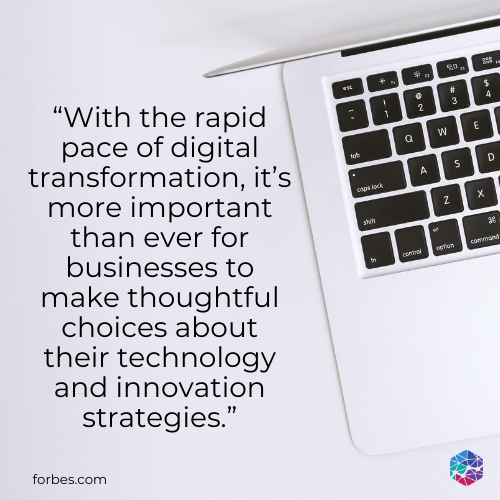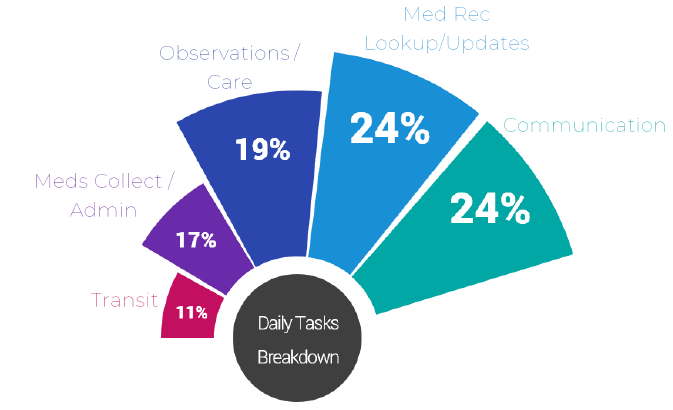“While everyone is focusing on digital transformation, how to keep up, and the impact it has on business…
Who is paying attention to the impact it has on your team culture?”
The human race is a curious group. We’ve created fire, invented the wheel, eradicated disease and left footprints on the moon. Limited only by our imaginations and the tools we have at the time, we dare to try harder, think outside the box and be bold enough to make mistake after mistake.
We eventually create something wondrous, unheard of – obscene even – often becoming the cause of revolution for future generations.

The Industrial Revolutions (all three of them!) changed the world right before our eyes, seemingly overnight and continued to sweep us down the river rapids of innovation.
From discovering steam power to power locomotives, to production lines and factories allowing the likes of Henry Ford to pump out T Model cars faster than anyone had ever seen before. The world saw the introduction of air planes and gasoline engines, electricity and telephones – just to name a few. Innovation continued and the world saw analogue give way to digital, computers became smaller and faster and this thing called the internet paved the way for major disruption. Communication circles became global, production became automated, expanding the capacity for business and the worlds information was at everyone’s fingertips.
Innovation in healthcare is no different. From Florence Nightingale’s influence on hygiene practices and the role of a Nurse, to the discovery of penicillin and vaccines and the invention of the pacemaker. In more recent times the electronic medical record, telehealth and personalised medicine.
Technology and software and apps are in every corner of our lives and is becoming the centre point of business growth goals – across all industries. If you don’t have a digital transformation plan, are you even in business?

In an article from Forbes earlier this year it was said:
“With the rapid pace of digital transformation, it’s more important than ever for businesses to make thoughtful choices about their technology and innovation strategies.”
(How to Keep Pace with Digital Transformation and Avoid Becoming Obsolete)
Another Forbes article highlights the “100 stats on Digital Transformation and Customer Experience” with stats like:

> Companies will spend a total of more than $2 trillion on digital transformation in 2019.
> Executives say the top benefits of digital transformation are improved operational efficiency (40%), faster time to market (36%) and the ability to meet customer expectations (35%).
> 56% of CEOs say digital improvements have led to increased revenue.
These statistics and points of view aren’t wrong. Digital Transformation isn’t just coming, it’s here, and adapting to stay relevant and appease the need of clients, customers and patients is crucial to business success. Healthcare is no different with an IT spend of nearly $2 billion dollars to date in Australia alone. But these stats are missing one key factor:
Their people.
In a report from Quantum Workplace, “Employee Engagement in Healthcare” (www.quantumworkplace.com) results from a survey conducted with 75,000 participants indicated that the healthcare industry saw a drop in engaged employees to just 56.7%. Citing factors like, poor leadership, feeling unheard and not acknowledged and preferring to be part of a purpose and making a difference, people are no longer just chasing job titles or pay checks. They want to be included, appreciated and believe in the long-term goals of their workplace.
It begs the questions though, while planning for their own digital transformation, are healthcare leaders taking the time to understand the impact new technologies have on their teams? Their roles? How they carry out their tasks? Is staff harmony and job satisfaction factored into such plans?
In a study conducted by Cogniom in 2018 we looked at the impact of mobile workstations during medication rounds. Leadership found the time to complete medication rounds was too long and believed the problem was likely related to the Nurse’s refusal to use the mobile workstations. The study results showed that it was in fact the workstations that created a hindrance to the tasks Nurse’s were trying to perform.
In trying to fix the problem, additional processes were introduced, but was done so without a true understanding of what the Nurse’s were experiencing on the floor. Ultimately it made the situation worse, led to the Nurse’s giving up trying to use the workstations, take on even more tasks to work around it, which resulted in the longer time frames to complete the rounds.

It was found that this caused a greater flow on affect with an average of only 24 minutes during an eight hour shift Nurses could spend on direct patient care. Not only did it have a negative effect on the medication rounds, but also to the team culture for the Nurses. They had become resentful, impatient and lost the capacity to work together as a team.
Turns out, it was the poor battery life of the workstations that was causing the problem and fixing that brought the digital transformation plan back on track, created a happier workplace, and improved patient outcomes.
The fact is, this is just one example of missing the mark when it comes to creating digital plans. With statistics like “7/10 implementations will fail” – it’s often due to poor planning, truly understanding the current state and lack of communication with staff. We need to be taking a closer look at how these plans are impacting our workforce, how to better approach it, and ultimately, be able to provide the opportunity for implementations to be a success for everyone involved.
Now more than ever the need for a healthy work environment is a top priority. Not only is it a need, it’s a game changer when deciding on where to work. People are looking towards achieving work / life balance goals and being happy and satisfied in the place where they spend most of their time is a rapidly growing factor.
We often refer to the new influence the millennials bring to the workforce and while some may say they’re just afraid of hard work, the reality is they’ve figured out how to work smart. They still have goals and pathways they want to achieve and explore, but not to the detriment of their health and wellbeing.
Our staff are our key to success, no matter the industry. However, when it comes to healthcare success, it becomes being about patient outcomes. It becomes a matter of life and death.
We as leaders owe it to not only them, but ourselves as well, to recognize and acknowledge the need for balance. We as leaders owe it to our people to provide a workplace that is healthy, inclusive and supportive.
We as leaders owe it to our work families to truly SEE our frontline workers, to HEAR their voice, and work TOGETHER to achieve our goals in the most productive and positive way possible. If we don’t, they’ll keep searching until they find an employer who does.

While innovation, technology and new tools will continue to evolve, there will always be something new to implement and adapt to. But none of that will matter if we have no workforce to use it. As the saying goes “A company is only as good as it’s people.” And they are just as worthy of our time and investment as the next digital transformation craze.
As featured on the Coreplus Practice Happy Blog





